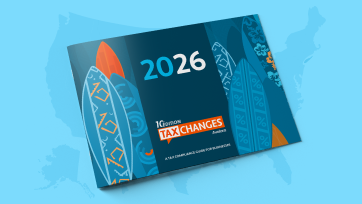
France’s e-invoicing reform: Summer 2025 updates
With less than 15 months until France’s phased rollout of mandatory business-to-business (B2B) e-invoicing, the summer of 2025 marks an important checkpoint.
Since October 2024, French tax authorities and businesses alike have taken significant steps towards readiness — from finalising key technical documentation to ramping up PDP-PPF testing.
Here’s a concise progress update.
PPF: Technical backbone, clearer definition
The Public Invoicing Portal (PPF) is confirmed as the sole reporting conduit to the French tax authorities (DGFiP) — but only through certified Partner Dematerialisation Platforms (PDPs). The PPF will not accept direct submissions from businesses.
The PPF is also the host of the central directory for invoice recipient resolution. It uses SIREN, SIRET, or routing codes to direct e-invoices to the correct recipient, creating a shared infrastructure for consistent addressing across platforms.
Interoperability: Peppol gains traction
To reduce the complexity of bilateral integrations between PDPs, France has validated the use of the Peppol network as a standard communication channel between platforms. Most PDPs are prioritising Peppol connectivity to streamline onboarding, improve data quality, and focus on value-added services like lifecycle tracking and support.
Point-to-point connections between PDPs remain possible, but the Peppol framework now offers a scalable, preferred alternative.
PDP-PPF testing: Progress but timelines vary
Since March 2025, more than 90 candidate PDPs have been testing technical connectivity with the PPF, especially for the directory and message routing functions.
Some PDPs are expected to receive full access to the directory by late June, with access for businesses expected in October. However, these dates should be treated as directional rather than fixed — adjustments are possible, though no change to the September 2026 go-live is currently planned.
Key documentation: Now publicly available
Businesses now have access to core technical specifications and standards. Three documentation sets are especially relevant:
PPF External Specifications:
Updated in December 2024, these define how PDPs connect to the PPF and manage reporting and directory functions.
AFNOR XP Z12 standards:
- Z12-012 defines the data model for invoices and lifecycle statuses.
- Z12-013 defines APIs used for interactions between PDPs, ERPs, and the PPF.
- Z12-014 describes common B2B invoicing use cases to help businesses understand real-world impacts.
These standards guide ERP changes, message formats, and integration planning — and are essential for IT and finance teams preparing for compliance.
What businesses should be doing now
1. Define your strategy
Start by selecting your receiving PDP. Many offer opt-in forms to begin directory designation. Use your SIREN number — the primary routing key — and confirm that your PDP supports your ERP and workflows.
If your organisation issues invoices, determine whether you’ll delegate issuance to a PDP. This will require a formal invoicing mandate.
2. Adapt your ERP
Ensure your systems can handle:
- Structured invoice formats aligned with Z12-012
- Lifecycle status updates (e.g., received, validated, rejected, paid)
- Directory resolution logic
Integration between your ERP and PDP should be high priority in the second half of 2025.
3. Prepare for e-reporting
Model flows for non-invoiced transactions, such as business-to-consumer (B2C) and cross-border sales, which must still be reported under France’s reform.
Review your tax data models: Identify the mandatory fields, check that VAT breakdowns are complete, and ensure your systems can capture net/gross amounts, transaction types, and reporting obligations per document.
Upcoming milestones
Several additional updates are expected in the coming months:
- A new version of the PPF external specifications
- Revisions to the three AFNOR XP Z12 standards
- A new annex or standard for e-reporting use cases
- Expanded access to the full central directory for PDPs
- Load testing results for the e-reporting hub
- Publication of final regulatory texts by year-end
While most structural elements are in place, these milestones will fine-tune the operational environment before production testing begins in early 2026.
Turn compliance into opportunity
The shift to mandatory e-invoicing is more than a regulatory challenge. For companies that act early, it offers a chance to streamline billing, improve data accuracy, and accelerate cash flow.
Strategically, aligning with a PDP and modernising ERP connections this year can set businesses up for competitive advantages when the mandate becomes reality in 2026.
Learn more about how Avalara can support e-invoicing compliance in France and across the EU.

Avalara Tax Changes 2026 is here
The 10th edition of our annual report engagingly breaks down key policies related to sales tax, tariffs, and VAT.
Stay up to date
Sign up for our free newsletter and stay up to date with the latest tax news.



